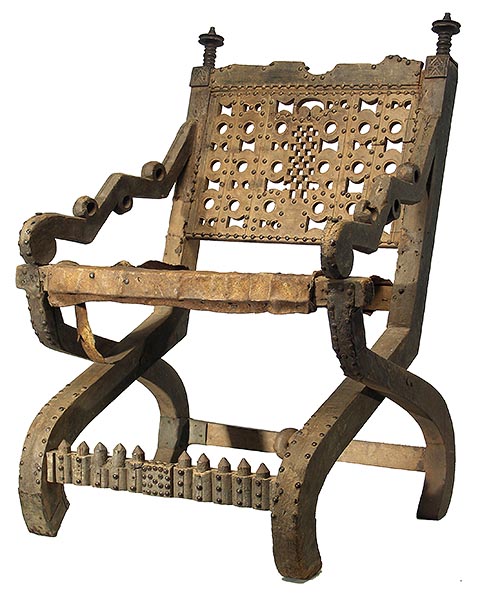
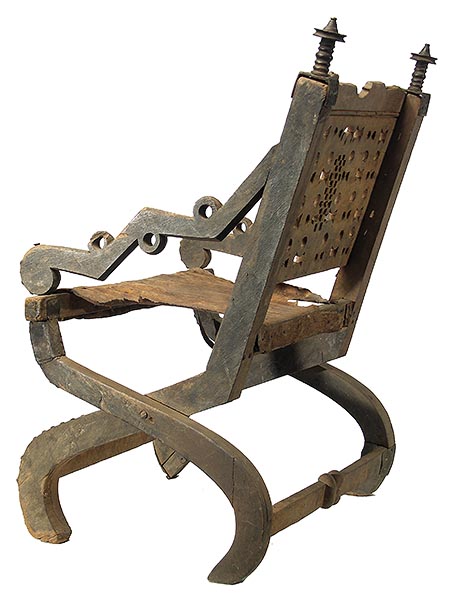
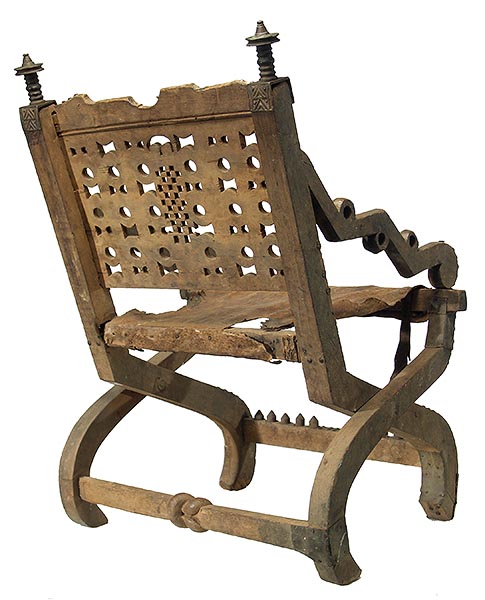
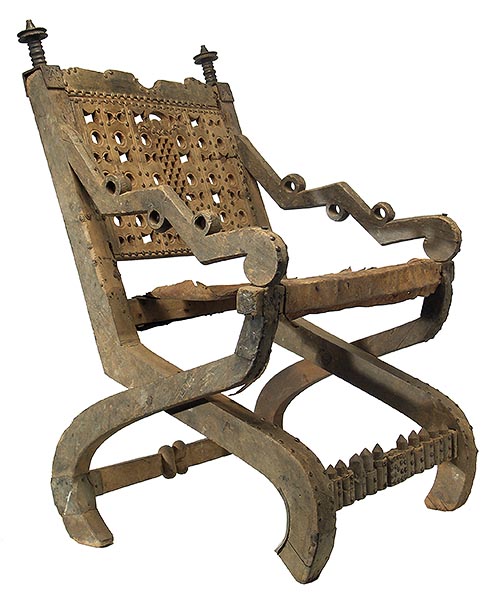
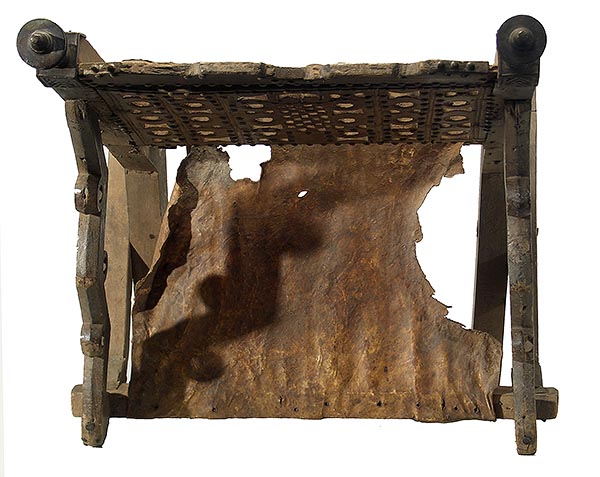
Photographs © Tim Hamill
ASANTE
AKONKROMFI CHAIR 5
34.5" high x 25.5" wide 25" deep
$1000
SOLD





Photographs © Tim Hamill
ASANTE
AKONKROMFI CHAIR 5
34.5" high x 25.5" wide 25" deep
$1000
SOLD
This chair has been vetted as authentic, dating from the 19th or early 20th Century.
This slightly larger example is in good condition with the exception of the leather seat, which is badly damaged. The unusual form is complemented with nice detailing on the front bottom and the front surface of the back.
Akonkromfi chairs are the most sculpturally complex of chairs found among the Asante. The chair has legs crossed like modern folding chairs and their angle and lightness of carving gives them the appearance of a 'praying mantis' from which it takes it's name akonkromfi. Owned by chiefs they were used upon ceremonial and public occasions when they were sat upon, often with pillows cushioning the seat. Possibly based upon early European styles of folding chairs through time they have become among the Asante highly embellished with figural elements worked into the wood along the top as openwork carving on the backrest, arms, and legs. The various iconic elements found on the chair are nearly 'baroque' in their forms and reflect attempts to identify with European sources. Often the chairs will have European style coats of arms or heraldic display on their backs. The outer frames are often decorated with round-headed upholstery brass tacks European machine turned brass finials known among the Asante as Ntuatire were attached to the tops of the chairs represented the abstracted claws of the eagle.
This chair is exemplary in its detailed carving of the backrest with openwork motifs based upon common Asante symbolic forms. The 'hour-glass' shape represents the donno drum, whose varying pitches and rhythms were used at court to honor royals. The open checkerboard pattern centered on the back rest is taken from a type of stool that only chiefs and royals could sit on. The lower brace between legs has the "Knot of Wisdom" (Nyansapo) carved on it. This is an apt symbol for a ruler as he must have the wisdom to untie the knot, literally to have the ability to deal with complex situations! Though it may be simple conjecture the pointed forms carved into the front brace of the chair may represent a bandolier of bullets representing the military power of the ruler and his willingness to use this power. The original leather covering of the seat now damaged shows the effect of time and wear and equally the age of this antique akonkromfi chair. Some additional sculpted details along the top of the chair have been lost through time.
Dr. Daniel Mato
Professor Emeritus of Art History
The University of Calgary
Calgary, Alberta, Canada
TRIBE |
OBJECT |